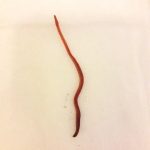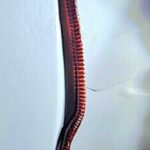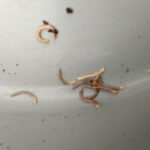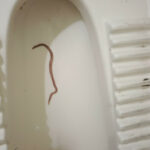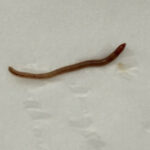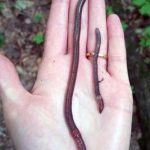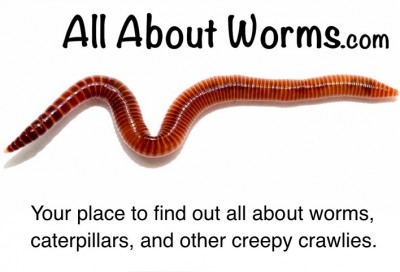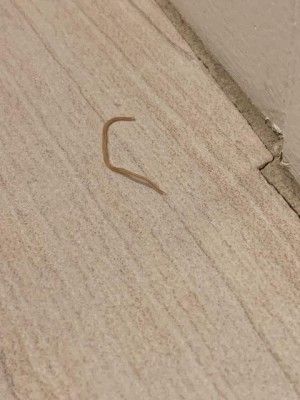
“Are these earthworms?” asks Adam in his submission regarding the big, pink worm pictured below. Now, he refers to a multitude of worms, but only pictures one, but we assume that the other worms look like this one. And to answer his question, we do think that this is an earthworm. Its coloration, segmentation, and shape point to this conclusion. The one thing it is missing is the clitellum, a physical trait which is characteristic of earthworms. The clitellum is the band of thicker skin that encircles the worm’s body, usually near its head, sometimes near its center. It is usually a different color from the rest of its body.
So, why does this worm not have one, and what does the clitellum do? Typically, earthworms that are not fully developed will not have clitellums, and it is only once earthworms reach sexual maturity (meaning they have reached adulthood and can mate with other earthworms) do they form the clitellum. The clitellum is the organ that stores a special fluid used to construct egg sacs. An earthworm will secrete this fluid after they have mated and it is time to lay their eggs. The time between reproduction and laying eggs is typically around four weeks. Interestingly, leeches, another annelid, also possess clitellums, and some species of them even engage their clitellum during sexual reproduction.
Now, as we are sure Adam is aware, earthworms are completely harmless. They are benefactors of the environment; they eat decomposing organic waste and convert it to nutrient-rich fertilizer via digestion and excretion. Of course, an overabundance of earthworms in a given area can over-aerate the soil and compromise the soil structure. This would then lead to the soil drying out and the roots in it dying. But that is entirely dependent on the number of earthworms in a given area and their species as well. Since Adam does not express any concern over his discovery, we will assume that he was simply curious to know what these were. For that reason, we recommend just letting the earthworms do their thing, and leaving them alone.
In conclusion, we think Adam is absolutely correct in identifying the worm as an earthworm. They are harmless creatures that benefit our environment, so Adam has nothing to worry about, and we advise that he let the worms be. We hope this proves helpful, and we wish Adam the very best!
All About Worms is always free, always reader-supported. Your tips via CashApp, Venmo, or Paypal are appreciated! Receipts will come from ISIPP Publishing.
You might also find these guys interesting!




